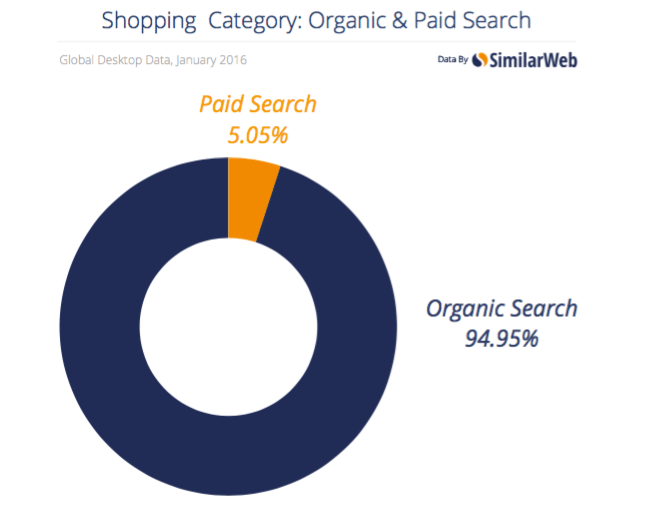Every great piece of content starts with a headline. The headline is the line that makes readers pause their scroll and pay attention. In fact, 80% of readers engage with headlines, but only 20% proceed to read the full content. Yet coming up with magnetic headline formulas on the fly is tough.
That’s why elite copywriters lean on proven structures. These formulas aren’t just clever but grounded in decades of marketing psychology and performance data.
Below are various headline formulas that consistently pull in clicks and why each works, with examples to spark your writing.
1. Warning: [Risk or Urgency Statement]
Few words interrupt scrolling faster than “Warning.” It triggers the brain’s survival instinct, making readers stop to assess a potential threat. Use it when your content uncovers pitfalls, exposes harmful assumptions, or reveals time-sensitive issues.
Example:
Warning: These Outdated Headline Formulas Are Killing Your CTR
2. What Happens When You [Action]
Curiosity is a potent psychological trigger. This headline promises the cause-and-effect story behind a specific action, often with an unexpected twist. It shines when your content details experiments, transformations, or surprising results.
Example:
What Happens When You Use Viral Headline Formulas on LinkedIn
3. See How Easily You Can [Desirable Result]
Readers crave results with minimal effort. The word “easily” signals that the payoff is within reach. Reserve this for tutorials or guides that genuinely simplify a process.
Example:
See How Easily You Can Craft Magnetic Headlines That Convert
4. Do You Make These [Blank] Mistakes?
No one likes being wrong, especially in public. This formula sparks introspection and just enough insecurity to drive a click, while promising a fix for common missteps.
Example:
Do You Make These 5 Mistakes with Your Headline Formulas?
5. The Lazy [Person Type]’s Way to [Benefit]
By pairing humor with high reward, this headline appeals to anyone seeking big wins with little effort. Ideal for productivity hacks, shortcuts, or “so-easy-it’s-almost-cheating” strategies.
Example:
The Lazy Writer’s Way to Find Headline Formulas That Actually Work
6. If You Don’t [Action] Now, You’ll Regret It Later
Pure FOMO. This headline reframes procrastination as future regret, making inaction feel risky. Use it for timely opportunities or fast-moving trends.
Example:
If You Don’t Learn These Headline Formulas Now, You’ll Regret It Later
7. Don’t Buy [X] Until You Read This
Instant intrigue. By planting doubt right before a purchase decision, you position your content as the essential, insider truth.
This is perfect for reviews, buyer guides, and affiliate round-ups.
Example:
Don’t Buy a Headline Analyzer Until You Read This Comparison First
8. You’ll Never Believe What [Person/Company] Did to [Achieve Result]
Label it clickbait if you must, but there’s a reason it dominates. This formula hides the “how,” promising a dramatic reveal. Deploy it only when your story truly delivers a surprising twist or counterintuitive tactic.
Example:
You’ll Never Believe What This Copywriter Did to Double Her CTR
9. [#] Proven Tips to [Achieve Result]
“Proven” builds trust, the number sets clear expectations, and “tips” suggest quick wins. Readers know they’ll get actionable value without much time investment, making this listicle formula a top favorite.
Example:
11 Proven Tips to Improve Your Headline Formulas Instantly
10. Stop [Negative Action] and Start [Positive Action]
Contrast sells. By showing the reader what to quit and what to replace it with, this headline frames your content as a clear before-and-after upgrade. It’s perfect for behavior-change articles, productivity tips, or any piece that replaces a bad habit with a better one.
Example:
Stop Guessing and Start Using Proven Headline Formulas That Work
11. Everything You Need to Know About [Topic]
This headline positions your piece as the definitive resource. It attracts readers who want one go-to guide instead of piecing together scattered answers. Use it only when your content truly covers the topic end-to-end—sections, subheads, and actionable takeaways included.
Example:
Everything You Need to Know About Writing High-Converting Copy
12. How to [Achieve Desired Outcome] Without [Unpleasant Action]
A classic for good reason: it offers the reward while removing the biggest objection.
This formula works across niches—from fitness (“without giving up carbs”) to software (“without a steep learning curve”). Deploy it when your method genuinely reduces pain, cost, or complexity.
Example:
How to Write Clickable Titles Without Sounding Like Clickbait
13. Now You Can Have [Desirable Thing] Without [Drawback]
Similar to #12 but framed as a new possibility. It promises a win-win scenario, eliminating the usual trade-off that keeps people stuck. Use it when your product, service, or insight breaks a stubborn barrier.
Example:
Now You Can Master Headline Formulas Without Spending Hours in Copywriting Courses
14. Get Rid of [Problem] Once and for All
Finality is irresistible. Readers wrestling with an ongoing pain want a permanent fix, not a temporary patch. Use this headline to address urgent, recurring frustrations where your content delivers a lasting solution, such as tech glitches, health issues, and workflow bottlenecks.
Example:
Get Rid of the Windows Blue Screen Once and for All
15. Here’s a Quick Way to [Solve a Problem]
Speed matters. By calling out a “quick way,” you’re telling busy readers they can solve a nagging issue fast. This is perfect for tutorials, time-saving tools, or any tip that compresses effort into minutes.
Example:
Here’s a Quick Way to Create Headlines That Boost Your CTR
16. [#] [Adjective] Facts About [Topic]
Numbers promise structure; adjectives like “surprising” or “essential” promise intrigue.
Combine them, and you have a snackable list of insights that feels easy to skim yet valuable to consume. Best for data-rich or myth-busting posts.
Example:
7 Surprising Facts About Subheadlines Most Writers Miss
17. What Everybody Ought to Know About [Blank]
This headline leverages social proof and fear of being left in the dark. It subtly hints that others already understand something crucial—do you?
Use it to expose misconceptions or highlight fundamentals your audience may overlook.
Example:
What Everybody Ought to Know About Writing Headlines That Work
18. The Secret of [Blank]
Few words hook attention like “secret.” It implies exclusive, insider knowledge that gives readers an edge. Reserve this headline framework for content that genuinely reveals a lesser-known tactic, backstory, or action plan.
Example:
The Secret of Every High-Performing Blog Post You See Online
19. Little-Known Ways to [Blank]
A gentler cousin of “The Secret…,” this headline still taps curiosity but promises several practical tips. It works because readers feel they’re uncovering hidden gems others have missed—ideal for underused tactics, alternative tools, or unconventional approaches.
Example:
Little-Known Ways to Make Your Content More Engaging
20. Why [Something Happens] and What to Do About It
Readers love knowing why a problem occurs but also want the fix. This headline delivers diagnosis and prescription in one line, positioning your content as complete guidance rather than mere commentary.
Example:
Why Most Brands Fail and What to Do About It
21. The Ultimate Guide to [Topic]
When someone Googles a topic, they often want a single, comprehensive resource. “Ultimate Guide” signals depth, structure, and authority. Use it only when your content genuinely answers every key question—otherwise, you risk disappointing readers and hurting credibility.
Example:
The Ultimate Guide to Writing Irresistible Value Propositions
22. How [Unlikely or Humble Start] Made Me [Success]
Humans are wired for stories, especially underdog tales. Highlighting a modest beginning makes success feel attainable and emotionally compelling.
This formula is best for case studies, personal narratives, or brand-origin stories with a clear lesson.
Example:
How Getting Fired Led Me to Create My Dream Career
23. How I [Achieved Result] in [Timeframe or Condition]
Specifics amplify credibility. Time-boxing the achievement suggests efficiency, while “I” provides social proof through lived experience. Readers click to see the exact steps they can replicate.
Example:
How I Made $100,000 in One Afternoon
24. Give Me [Time Period] and I’ll Show You [Result]
This headline flips the traditional promise into a direct trade: a small slice of the reader’s time for a big payoff. It shines in webinar titles, video hooks, or landing pages where you can realistically deliver the promised result within the stated window.
Example:
Give Me 7 Minutes and I’ll Show You the SEO Formula That Outperformed Everything Else
25. Here Is a Method That Is Helping [Audience] to [Benefit]
Social proof meets practicality here. By showcasing a group already benefiting, you remove doubts about efficacy. Use this for tutorials, frameworks, or tools with documented success among peers.
Example:
Here Is a Method That Is Helping Content Creators Write Better Copy Faster
26. Is [Common Practice] Costing You [Negative Outcome]?
Nothing jolts a reader like discovering a familiar habit might be hurting them. This formula challenges conventional wisdom and sets up your content as the corrective path forward. It’s perfect for myth-busting or paradigm-shifting articles.
Example:
Is Following Generic Copy Formulas Costing You Money?
27. [#] Ways to [Do Something Valuable]
A timeless list headline. The number signals structure, and “ways” implies variety, giving readers multiple angles to try. This headline formula is reliable for evergreen blog posts, social threads, or quick-hit newsletters.
Example:
9 Ways to Level Up Your Headlines with Better Formulas
28. Who Else Wants [Blank]?
This headline rallies readers around a common desire, implying that others are already on board. It taps social proof and curiosity in one stroke, making the reader wonder, “Why not me?”
Example:
Who Else Wants to Work From Anywhere and Still Earn a Full-Time Income?
29. If You’re [Person Type], You Can Use This to [Achieve Result]
By matching a clear identity to a clear payoff, this headline framework feels personal and attainable. It invites niche audiences to see themselves in your solution.
Example:
If You’re a Freelance Writer, You Can Use This to Land Better Gigs
30. You Don’t Have to Be [Barrier] to Be [Outcome]
This headline demolishes limiting beliefs before they block action. Readers who thought they “weren’t qualified” suddenly feel empowered to try.
Example:
You Don’t Have to Be an Extrovert to Be Great at Sales
31. [Do Something] Like [Famous Person or Group]
Aspirational and familiar, this headline promises readers the chance to emulate a respected figure or brand, leveraging borrowed authority to boost clicks.
Example:
Write Headlines Like Gabriel Nwatarali with These Battle-Tested Formulas
32. How to [Do Something] Like a Pro
Straightforward yet compelling, this format offers mastery. It attracts beginners hungry for expert-level results without the feeling of overwhelm. Plus, you can easily extend it to create more impact.
Example:
How to Edit Videos Like a Pro (Even If You’re a Total Beginner)
33. The Beginner’s Guide to [Topic]
Using “Beginner’s” in your headline lowers fear and positions the piece as a safe, comprehensive starting point.
Example:
The Beginner’s Guide to Writing Landing Page Copy
34. How to Build [Blank] You Can Be Proud Of
Pride is a powerful motivator. This headline appeals to readers eager to upgrade something that reflects their skill or identity.
Example:
How to Build a Business You Can Be Proud Of
35. Are You [Feeling, Trait, or Identity]?
This is a question headline that drives self-reflection. It sparks instant engagement because it challenges or affirms identity. Use it for mindset or community-focused content.
Example:
Are You the Kind of Marketer Who Tests Their Headline Formulas?
36. If You’re [Blank], You Can [Blank]
A flexible, fill-in-the-blank variant that links a qualifier to a benefit. Speak directly to a segment of your audience and promise a result they crave.
Example:
If You’re Struggling with Debt, You Can Still Build Wealth
37. Why Most [Group] Fail and How to Avoid It
Failure is magnetic, especially when the reader belongs to the group in question. This headline warns of a common pitfall and positions your content as the antidote.
Example:
Why Most Startups Fail and How to Avoid It
38. [Group/Person Type] Who [Undesirable Outcome] Vs [Group/Person Type] Who [Desired Outcome]
Contrast is memorable. By pitting two mindsets, personas, or outcomes against each other, you force readers to pick a side—instantly making the lesson stick.
Use this formula to highlight the gap between mediocre and exceptional, or when framing a “this vs. that” narrative.
Example:
Creators Who Burn Out vs. Creators Who Scale
39. Who [Changed Something] and [Why It Matters]
Intrigue + consequence = clicks.
This headline hints that someone made a bold move and that the ripple effects are real. It’s ideal for commentary, industry shake-ups, or news-driven analysis where context is everything.
Example:
Who Quietly Killed Third-Party Cookies and What It Means for Your Ads
40. The [Unexpected Take] on [Common Topic] That [Desired Outcome]
People lean in when their assumptions are challenged. By promising a contrarian or unconventional angle, you position your content as thought leadership rather than “just another post.”
Example:
The Contrarian Take on SEO That Tripled Organic Traffic in 90 Days
41. [Adjective] [Noun] That Create [Result]
Fast, clear, and value-packed. Pair a curiosity-sparking adjective (“tiny,” “powerful,” “unexpected”) with a tangible payoff to show readers why the small thing matters.
Example:
Tiny Copy Adjustments That Trigger Major Conversion Gains
42. The [Myth] Holding You Back in [Topic]
Nobody wants to be fooled. Calling out a myth creates tension and positions your content as the liberating truth. This is perfect for debunking clichés or unlearning bad habits.
Example:
The Traffic Myth That’s Slowing Down Your Sales Funnel
43. The Search for [Ideal Trait] in a World of [Contrasting Reality]
This headline reads like a manifesto. It speaks to readers who crave meaning, not shortcuts. Use it when your content explores transformation, purpose, or going against the grain in a world of surface-level noise.
Example:
The Search for Authentic Brand Voice in a World of Noise
44. [Concept A] vs [Concept B]: How We Decide
Set up a head-to-head and then reveal the mental model behind the winner. Great for dissecting trade-offs, strategy choices, or performance levers.
Example:
Profit vs Purpose: How Founders Decide Who to Work With
45. Getting to [Outcome] Without [Pain Point]
This formula offers the best of both worlds — a desirable result without the usual struggle. The headline framework works because it reduces resistance: the reader is thinking, “That’s exactly what I want, but I didn’t think it was possible.”
Perfect for sales and marketing content where you’re removing objections before they surface.
Example:
Getting to “Yes” in Every Sales Call Without Being Pushy
46. Why [Common Compromise] Is [Pain or Poor Result]
Most people default to the middle ground because it feels safe. That’s why this headline works: it challenges compromise and reframes it as the real threat to progress.
Use it when calling out “reasonable” behavior that leads to weak results. It’s best for leadership, pricing, positioning, or content that disrupts conventional wisdom.
Example:
Why Playing It Safe Is Killing Your Growth
47. The [Role]’s Dilemma: [Decision] or [Decision]?
This headline formula introduces tension through a difficult choice with no obvious answer. It positions the audience as someone who must choose between two paths, both with consequences. Use it when highlighting trade-offs, strategy debates, or ethical questions.
Example:
The Founder’s Dilemma: Scale Fast or Build Sustainably?
48. What Really Drives [Outcome]
This headline promises clarity in a sea of surface-level content. It implies you’re going deeper, revealing the hidden forces behind success.
Use it when debunking myths, revealing strategy, or reframing what matters. Best for analysis, strategy, and performance breakdowns.
Example:
What Really Drives Click-Through Rates Up
49. The [Unexpected Group] Who [Achieved Remarkable Result]
We’re wired to root for the underdog, especially when the win is unexpected. This headline delivers a twist: the success story you didn’t see coming.
Use it to spotlight unconventional wins, case studies, or unlikely players.
Example:
The Tiny SaaS Brands That Outrank Big Tech on Google
50. The Tipping Point That [Desired Outcome]
Big change often hinges on a single moment. This headline promises to reveal that pivotal instant, making it perfect for personal stories, dramatic business pivots, and other sharp inflection points.
Example:
The Tipping Point That Turned Our Blog into a Lead Engine
51. Why Some [Things] Stick and Others [Undesirable Outcome]
Pattern-seekers love this formula because it invites readers to compare why one idea breaks through while another flops. It’s ideal for deep dives into certain topics like marketing, branding, UX, or content strategy.
Example:
Why Some Headlines Stick and Others Are Instantly Forgotten
52. The Hard Truth About [Topic]
Blunt and unfiltered, this headline sets the stage for real talk. Use when your content delivers tough love or unpopular insight in thought-leadership, mentoring, or no-nonsense strategy pieces.
Example:
The Hard Truth About Building an Audience from Scratch
53. Start With [Deeper Reason/Strategy] to [Outcome]
This formula reframes success as something that starts beneath the surface. It’s not just about what to do — it’s about why it works. Use this when you want to elevate a practical skill or tactic by rooting it in principle, insight, or intent.
It’s ideal for content that connects strategy to execution.
Example:
Start With Empathy to Write Copy That Converts
54. Be the [Odd or Remarkable Thing] in a Sea of [Ordinary or Common Things]
Everyone wants to stand out, and this headline taps directly into that desire. It’s a natural fit for positioning playbooks, brand-building stories, or personal-development content that celebrates profitable differentiation.
Example:
Be the Memorable Brand in a Sea of Forgettable Logos
55. [Action] Your Way to [Better Outcome]
This formula is all about forward motion. It suggests that you can reach a desirable result by taking a specific, strategic action, without a full reset. Use it when you’re showing how to improve, optimize, or elevate an existing process, offer, or mindset.
Example:
Automate Your Way to Higher Profits
56. The [DIY or Shortcut] Alternative to [Expensive/Established Option]
When you want to challenge the idea that “premium” must cost a premium, this headline formula shines by positioning your solution as the smarter, more accessible path. It’s perfect for productized services, templates, or budget-friendly strategies.
Example:
The Free Copywriting Career Alternative to $10K Bootcamps
The Headline Is Only as Strong as Its Timing
A clever headline can flop if it ignores audience intent. For example, a curiosity-driven hook might bomb when readers want straight answers. Similarly, using “Ultimate Guide” can repel experts but thrill beginners.
So match headline formulas to where your audience is on their journey—awareness, consideration, or decision.
Need magnetic copy that does the selling for you? Let’s chat.
Related:

We empower people to succeed through information and essential services. Do you need help with something? Contact Us.
Want a heads-up once a week whenever a new article drops?







